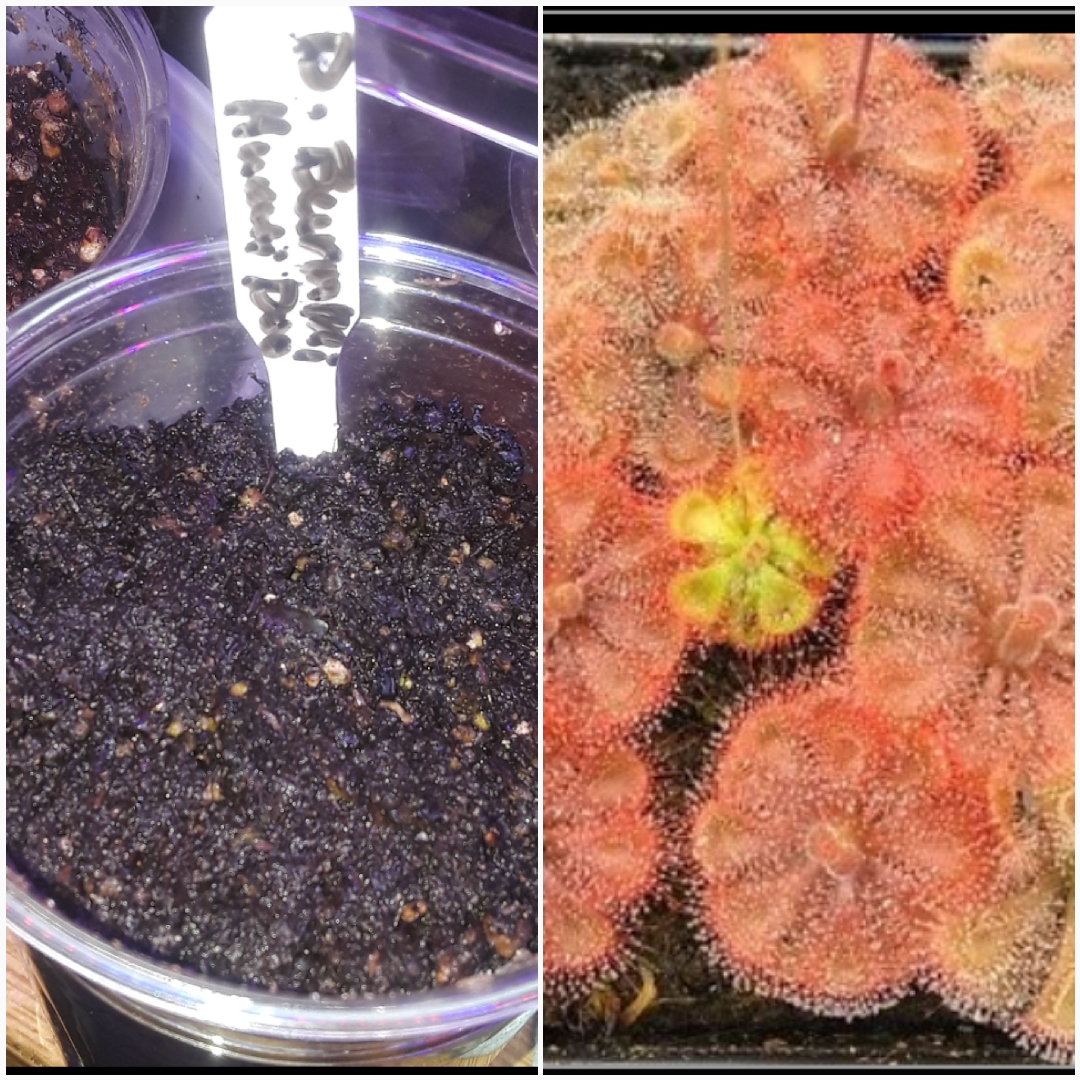
Drosera burmanii 'Humpty Doo'
Burmanii Red Sundew
D. burmannii ‘Humpty Doo’ grows as an annual in the wild but can live for several years in cultivation if fed regularly. It flowers prolifically, producing hundreds of seeds over its life and turns bright pink under intense light. An easy to grow from seed carnivorous plant that catches its own fertiliser (insects). As with most carnivorous plants it grows in an acid wet environment, so the best medium to use is sphagnum moss peat (without added fertiliser) or well rinsed coconut coir and perlite. Most carnivorous plants catch insects because they grow in acid/ wet environments where nutrients are lacking. They also never tend to see alkaline water so it is best to water with rainwater.
Contributed by @PunkyKy
-
Full sun
-
Frequent watering
-
A little frost hardy: 32F (0°C)
-
Free draining
Common name
Burmanii Red Sundew
Latin name
Drosera burmanii 'Humpty Doo'
type
Carnivorous plant
family
Droseraceae
ph
4.5 - 6.0 Acid - Neutral
Plant & bloom calendar
-
Best time to plant
full grown dimensions
 0.05 M
0.02 M
0.05 M
0.02 M
Drosera burmanii 'Humpty Doo'
D. burmannii ‘Humpty Doo’ grows as an annual in the wild but can live for several years in cultivation if fed regularly. It flowers prolifically, producing hundreds of seeds over its life and turns bright pink under intense light. An easy to grow from seed carnivorous plant that catches its own fertiliser (insects). As with most carnivorous plants it grows in an acid wet environment, so the best medium to use is sphagnum moss peat (without added fertiliser) or well rinsed coconut coir and perlite. Most carnivorous plants catch insects because they grow in acid/ wet environments where nutrients are lacking. They also never tend to see alkaline water so it is best to water with rainwater.
Propagating by division
From Early Spring TO Late Winter
Drosera tend to form clumps over time, and the clumps can easily be divided and the divisions re-planted
Planting
From Early Spring TO Late Winter
Plant in a mix of 1 part peat, 1 part sand, 1 part long-fibred sphagnum (LFS), and 1 part perlite. Rinse your media before you use them . Can be planted at any time. Keep the plant in sub-tropical conditions, if possible.









